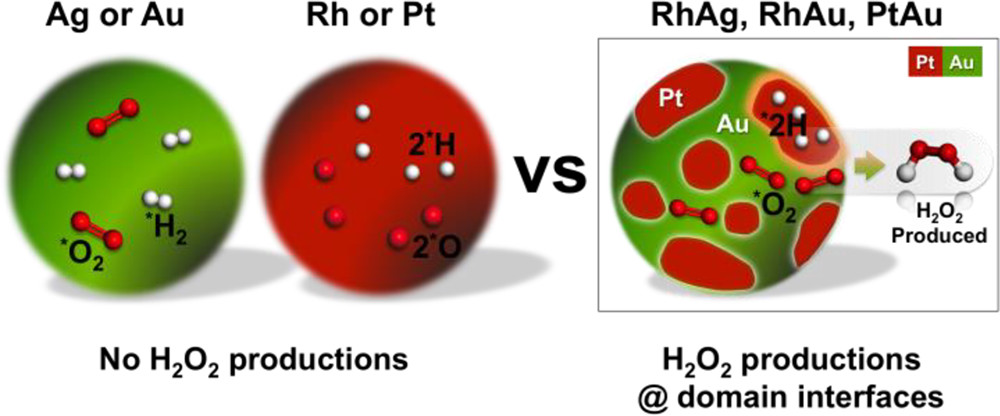Unlocking the Potential of Nanoparticles Composed of Immiscible Elements for Direct H2O2 Synthesis
슈퍼관리자
2021-05-21
Unlocking the Potential of Nanoparticles Composed of Immiscible Elements for Direct H2O2 Synthesis
-
Authors :
D. Kim, H. Nam, Y. H. Cho, B.C. Yeo, S.-H. Cho, J.-P. Ahn, K.-Y. Lee, S. Y. Lee, and S. S. Han
-
Journal :
ACS Catalysis
-
Vol :
9
-
Page :
8702-8711
-
Year :
2019

Abstract
Today, multimetallic nanoparticles (NPs) are extensively studied to search for high-performance catalysts. Unfortunately, a huge material space of NPs composed of immiscible elements has been generally disregarded for catalyst development due to the inherent difficulty of alloy synthesis. Herein, for the direct synthesis of hydrogen peroxide (H2O2), we demonstrate that NPs of immiscible elemental combinations of Rh–Ag, Rh–Au, Pt–Au, and Ir–Ag can efficiently produce H2O2, despite the negligible activities of Rh, Pt, Ir, Ag, and Au alone. In particular, we show that two catalysts, Rh13Ag87 and Pt28Au72 NPs, can outperform prototypic Pd NPs. Rh13Ag87 NPs, owing to their high content of the less-expensive element Ag, exhibit a 7.3-fold enhancement in cost-normalized productivity compared to Pd and, thus, may serve as an economical option. The other catalyst of Pt28Au72 NPs exhibits a productivity of 300 mmol gcat–1 h–1 and a 15-fold increase over that of Pd under isoconversion conditions. The observed remarkable productivities of these NPs are a result of the synergy between the two elemental domains at the interface. The present study suggests that the hitherto underutilized space of immiscible elemental combinations should be more actively searched for the development of improved catalyst materials.















